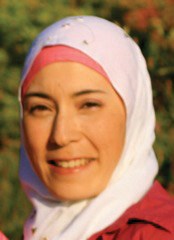A South Asian couple brought their two-year-old daughter to my Richmond clinic.
She had irregular asthmatic wheezing, frequently caught colds, and liked to eat dirt and lick walls.
She was a fireball of energy, easily got upset and was always asking for cold milk. Her tongue was bright red with a more crimson strawberry-red tip, and her pulse was floating and very rapid.
Asthma is the most chronic disease among children worldwide. According to a study published in the American Journal of Epidemiology (May 2010), asthma incidence rates in Ontario increased in children by 30 per cent between 1996-2005.
In fact, the rate of asthma in children is increasing so rapidly that the Canadian Healthy Infant Longitudinal Development Study (CHILD) was initiated to understand genetic and environmental factors affecting asthma in children born after 2010.
With asthma, there is chronic inflammation of the bronchial pathway that restricts airflow, causing wheezing, coughing, chest tightness and shortness of breath.
It is often triggered from breathing allergens or irritants in the air such as smoke, pollen, pollution or chemicals.
In traditional Chinese medicine (TCM), the root causes of asthma are understood to be excess phlegm, and cold or heat pathogens retained in the body. A “heat” pathogen in Chinese medicine is similar to modern medicine’s concept of inflammation, infection or fever. However, in TCM, heat can also carry the emotions of anger, irritability or tempestuousness.
A “cold” pathogen refers to having a cold body and aversion to cold weather, often with a desire to curl up and retract from social interaction.
Phlegm pathogen relates to the retention of a form of sticky mucus that is visible or invisible. Visible in that it is seen by the naked eye when coughed up, drained nasally, or exuded from the skin as in cases of acne or eczema. “Invisible” phlegm refers to the inability to expectorate phlegm such as in cases of weight gain, sinus, head or chest congestion, depression, and some cases of dizziness or epilepsy.
For this young girl, given her fiery energy and crimson red tongue, it was clear her pattern of disharmony involved heat and phlegm pathogens.
Looking for the root origin of her asthma, I first asked the parents about their family diet. They ate spicy food daily, especially green/red chilis, and drank mostly juice and some cold water. Spicy food is very hot and aggravates inflammation of the bronchial pathways. The girl would then drink three to four glasses of cold milk a day to soothe her inflamed airways.
But dairy products (cheese, milk, yogurt) are known in natural medicine circles to cause more inflammation and build-up of phlegm in the body. And drinking cold fluids further contracts tissues and vessels, slowing digestion and metabolism.
When the body is too weak to deal with excess amounts of spicy and dairy foods, symptoms worsen, and may show up as arthritis, eczema or asthma.
Since the girl could not avoid the daily family cuisine of spicy food, she intuitively asked for cold drinks to cool her, and milk to coat the dry, inflamed sensation of her airways.
Interestingly, she licked walls and ate dirt because they contain natural minerals that cool stomach fire caused from ingesting spicy food.
For example, gyproc walls contain gypsum, which is a mineral herb in Chinese medicine called “Shi Gao” (meaning “rock paste”). It is used specifically to calm inflammation of the stomach such as in cases of gastritis.
I asked the girl if she would like to take Chinese medicine to stop her cough and difficulty breathing rather than eat dirt or lick walls. She calmly nodded her head.
Chinese medicine goes hand-in-hand with awareness of the body’s needs and dietary changes. The parents understood and significantly reduced the spiciness of their family diet. They also give themselves and their children daily doses of warm lemon-water.
This bright, two-year old girl loves taking her herbal medicine. After two months of regular herbs, she stopped eating dirt and licking walls. Within another seven months of taking herbs, she is asthma-free.
Mee Lain Ling is a family-focused doctor of Traditional Chinese Medicine located across from Richmond Hospital. Visit drmeelainling.com for more health articles and contact information.



